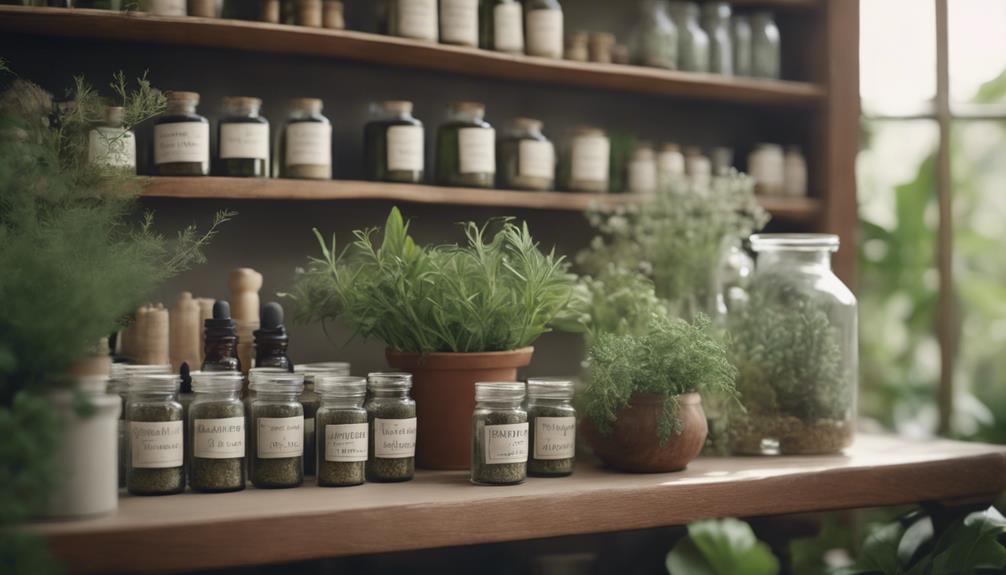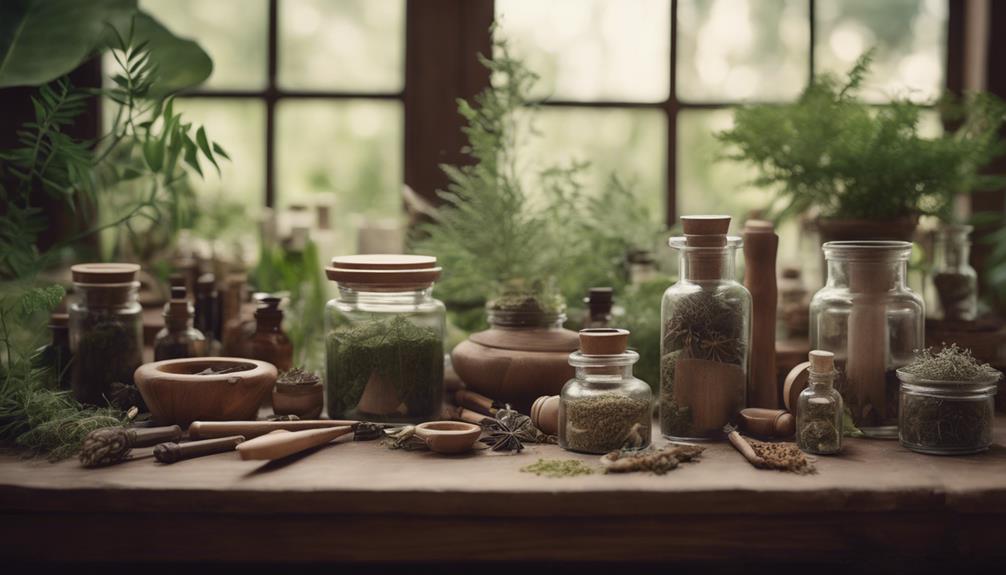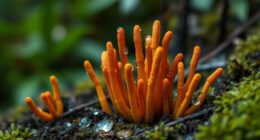Ashwagandha, an ancient Indian herb, has been a cornerstone of Ayurvedic medicine for centuries, prized for its remarkable ability to promote physical and mental well-being. This adaptogenic herb, translating to 'smell of the horse', contains antioxidants, flavonoids, and alkaloids, supporting immune function, cognitive abilities, and healthy thyroid function. Ashwagandha reduces cortisol levels, alleviates symptoms of anxiety and depression, and improves mood. It also improves memory, attention, and processing speeds, enhancing neural connections and supporting learning and memory consolidation. As a natural energy booster, ashwagandha helps the body adapt to stress; discover its full potential for a balanced lifestyle.
Key Takeaways
• Ashwagandha, an ancient Indian herb, is a cornerstone of Ayurvedic medicine, symbolizing strength and energy for physical and mental well-being.
• Rich in antioxidants, flavonoids, and alkaloids, ashwagandha supports immune function, cognitive abilities, and healthy thyroid function.
• As a natural adaptogen, ashwagandha reduces cortisol levels, alleviates anxiety and depression symptoms, and promotes mood enhancement.
• Ashwagandha improves memory, attention, and processing speeds, while reducing brain inflammation and oxidative stress for enhanced cognitive support.
• With a recommended dosage of 300-500 mg twice daily, ashwagandha is a natural remedy for stress reduction, anxiety management, and overall wellness.
Unveiling Ashwagandha's Rich History
With its roots dating back over 3,000 years to ancient India, ashwagandha has been a cornerstone of Ayurvedic medicine, symbolizing strength and energy in traditional Indian culture.
This adaptogenic herb has been revered for its rejuvenating properties, enhancing vitality and promoting overall well-being.
In ancient India, ashwagandha was used to promote physical and mental health, supporting the body's natural response to stress.
The name 'ashwagandha' translates to 'smell of the horse,' indicating its potential to increase strength and vitality.
This ancient herb has been revered for centuries, and its significance extends beyond its medicinal properties, representing strength, courage, and vitality in Indian culture.
Unlocking Health Benefits and Properties

Ashwagandha's impressive repertoire of health benefits stems from its unique blend of antioxidants, flavonoids, and alkaloids, which work synergistically to combat stress, anxiety, and oxidative stress.
This adaptogenic herb boasts an array of bioactive compounds, including withanolides, that have been shown to enhance immune function, cognitive abilities, and overall well-being.
Ashwagandha's antioxidant properties help mitigate the effects of free radicals, promoting longevity and vitality. Additionally, its flavonoids and alkaloids have been found to support healthy thyroid function, metabolism, and reproductive health.
Stress Reduction and Well-being

Chronic stress and anxiety can be effectively managed by incorporating ashwagandha into one's daily routine, as it has been shown to significantly reduce cortisol levels and alleviate symptoms of anxiety and depression.
By acting as a natural adaptogen, ashwagandha helps the body adapt to stress, promoting mental well-being and reducing feelings of anxiety. Studies have consistently demonstrated ashwagandha's ability to lower cortisol levels, leading to improved mood and reduced symptoms of depression.
As a natural alternative to antidepressants, ashwagandha offers a safer, more sustainable solution for managing chronic stress and anxiety. By incorporating ashwagandha into their daily routine, individuals can experience improved mental clarity, reduced anxiety, and a sense of overall well-being.
Cognitive Support and Memory Enhancement

Research has consistently shown that ashwagandha's cognitive-enhancing properties improve memory, attention, and information processing speeds, ultimately leading to better mental agility and a lower risk of cognitive decline.
By reducing brain inflammation and oxidative stress, ashwagandha supports mental clarity and focus.
Studies have demonstrated that ashwagandha supplementation increases cognitive function, particularly in individuals with chronic stress.
This ancient herb has been shown to enhance neural connections, promoting better communication between brain cells.
As a result, ashwagandha has been found to support learning and memory consolidation, making it an attractive natural remedy for cognitive support and memory enhancement.
Integrating Ashwagandha Into Daily Life

By incorporating ashwagandha into their daily routine, individuals can experience a significant reduction in stress and anxiety while enjoying a natural energy boost. With its adaptogenic properties, ashwagandha helps the body adapt to stress, making it an excellent addition to a daily wellness regimen.
Ashwagandha can be consumed in various forms, including powders, teas, and tinctures, making it easy to integrate into daily life. The recommended dosage ranges from 300 to 500 mg of standardized extract, taken twice daily.
Frequently Asked Questions
Is Ashwagandha Safe for Pregnant or Breastfeeding Women?
Ashwagandha's safety during pregnancy and breastfeeding is a concern. While it's traditionally used in Ayurvedic medicine, there's limited research on its effects on fetal development and infant health.
The National Institutes of Health advises pregnant women to consult their healthcare provider before using ashwagandha, as it may stimulate the uterus and cause miscarriage. Breastfeeding women should also exercise caution, as ashwagandha may affect milk production.
As a precaution, it's recommended to avoid ashwagandha supplementation during these periods.
Can Ashwagandha Interact With Prescription Medications?
Ashwagandha, the revered herb, can interact with certain prescription medications, necessitating care. Specifically, it may exacerbate the effects of blood thinners, diabetes medications, and thyroid hormones. According to the National Institutes of Health, 'Ashwagandha may increase the risk of bleeding when taken with anticoagulant medications.'
Hence, it's important for individuals taking prescription medications to consult their healthcare provider before incorporating ashwagandha into their regimen.
How Long Does It Take to Experience Ashwagandha's Benefits?
She typically starts to experience Ashwagandha's benefits within 1-2 weeks of consistent consumption, with noticeable effects on stress reduction and energy levels.
As the body adapts, cognitive enhancement and immune support become more pronounced around 4-6 weeks.
Maximum benefits are often realized after 8-12 weeks of regular use, when the herb's adaptogenic properties have fully kicked in.
Are There Any Potential Side Effects of Taking Ashwagandha?
When taking ashwagandha, she may experience mild side effects, such as stomach upset, diarrhea, or allergic reactions. These effects are generally rare and transient, resolving on their own within a few days.
According to the National Institutes of Health, 'Ashwagandha is considered safe when used for short periods,' but it's essential to consult a healthcare professional before using it, especially for those with underlying medical conditions or taking medications.
Can Ashwagandha Be Used by Children or Teenagers?
As a gentle rain nourishes a budding plant, ashwagandha's benefits extend to the young, but with caution.
While ashwagandha can be used by children and teenagers, it's essential to consult a pediatrician or healthcare professional beforehand. They should tailor the dosage and form to the child's specific needs, as excessive consumption may lead to side effects.
According to the National Institute of Health, 'ashwagandha has been used in children, but more research is needed to confirm its safety and efficacy in this age group.'
Conclusion
As the ancient Indian proverb goes, 'When diet is wrong, medicine is of no use; when diet is correct, medicine is of no need.'
Ashwagandha's time-tested benefits have earned it a permanent place in many wellness routines, offering a natural path to vitality and rejuvenation.
With its adaptogenic properties and stress-reducing effects, this potent elixir has become a beacon of hope for those seeking a holistic approach to wellness, empowering individuals to take control of their health and unleash their full potential.










